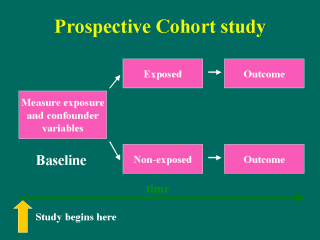 |
Case-control
studies are perhaps the most frequent form of analytic study designs used in
the injury field. These designs are very good for events that are rare in
occurrence, and one could argue that severe injuries are relatively rare.
Still, there are some situations where cohort study designs would be
appropriate in the injury field. Most notably for less severe forms of
injury. The classic design in a cohort study is shown here. The study begins
by assessing baseline levels of the exposure and other variables. Study
subjects are then followed on a regular basis to identify the outcome. The
frequency of outcomes are tested between persons who had exposure to the
possible risk factor at baseline and persons with no exposure. |
